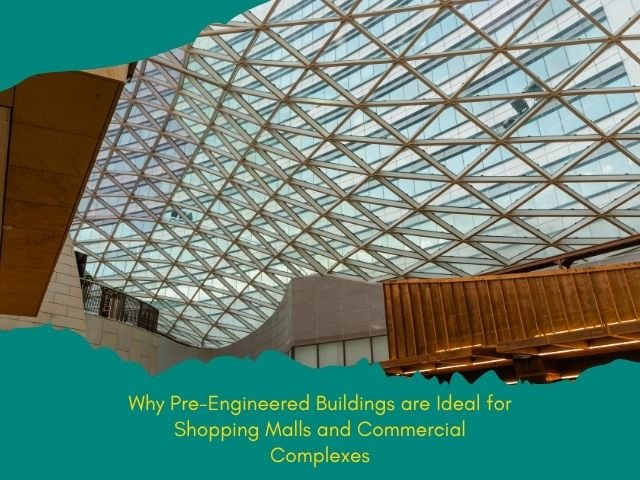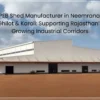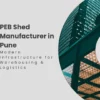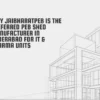Why Pre-Engineered Buildings are Ideal for Shopping Malls and Commercial Complexes
TL;DR: Pre-engineered buildings are ideal for shopping malls and commercial complexes due to their cost-effective construction, rapid assembly, and customizable designs. Learn why pre-engineered buildings are perfect for modern retail and commercial projects in this comprehensive guide.
Introduction: The Future of Commercial Construction
Imagine a bustling shopping mall, filled with vibrant stores and eager shoppers, built in half the time and cost of traditional construction. Sounds like a dream, right? This is the reality with pre-engineered buildings (PEBs), a game-changer for modern commercial projects. Whether you’re a developer planning a sprawling commercial complex or a business owner dreaming of a sleek retail space, PEBs offer unmatched benefits. Why pre-engineered buildings are ideal for shopping malls and commercial complexes lies in their efficiency, flexibility, and sustainability—qualities that make them a top choice in today’s fast-paced construction world. In this article, we’ll explore why PEBs are revolutionizing commercial construction and how they can save you time, money, and headaches.
What Are Pre-Engineered Buildings?
Pre-engineered buildings are structures designed and fabricated off-site using standardized components, then assembled on-site. Unlike traditional construction, which relies on custom-built materials, PEBs use pre-fabricated steel frames, panels, and other components tailored to specific project needs.
- Key Features:
- Factory-made components for precision.
- Modular designs for easy customization.
- Quick assembly with minimal on-site labor.
This approach makes PEBs a perfect fit for large-scale projects like pre-engineered buildings for commercial complexes, offering speed and reliability without sacrificing quality.
Why Are Pre-Engineered Buildings Cost-Effective?
Cost is a major factor in any commercial project. PEBs shine here, slashing expenses in multiple ways.
- Lower Material Costs: Standardized steel components are mass-produced, reducing costs compared to custom materials.
- Reduced Labor Expenses: With most components pre-fabricated, on-site labor needs are minimal, cutting costs significantly.
- Faster Construction: PEBs can be erected in weeks, not months, saving on labor and financing costs.
For example, a 50,000-square-foot shopping mall built with PEBs could save up to 20–30% compared to traditional methods, according to industry estimates. This makes pre-engineered buildings ideal for shopping malls on tight budgets.
How Do PEBs Speed Up Construction Timelines?
Time is money, especially in commercial real estate. PEBs drastically reduce construction timelines.
- Pre-Fabrication Advantage: Components are manufactured off-site while site preparation occurs, streamlining the process.
- Simplified Assembly: Bolted connections and pre-drilled parts mean faster, safer assembly.
- Weather Resistance: Steel components withstand harsh conditions, minimizing delays.
A case study of a retail complex in Texas showed a PEB project completed in just 4 months, compared to 8–10 months for traditional construction. This speed makes pre-engineered buildings perfect for modern retail projects needing quick turnarounds.
Are PEBs Customizable for Shopping Malls?
One myth about PEBs is that they lack design flexibility. In reality, they’re highly customizable.
- Flexible Layouts: PEBs support open floor plans ideal for malls, with wide spans up to 100 feet without internal columns.
- Aesthetic Options: Exterior finishes like glass, brick, or cladding blend seamlessly with modern mall designs.
- Scalability: Need to expand later? PEBs allow easy additions without major structural changes.
For instance, a shopping mall in California used PEBs to create a sleek, modern facade while maintaining spacious interiors, proving why pre-engineered buildings are ideal for shopping malls and commercial complexes.
How Do PEBs Enhance Sustainability?
Sustainability is a growing priority for commercial developers. PEBs align perfectly with eco-friendly goals.
- Recyclable Materials: Steel used in PEBs is 100% recyclable, reducing waste.
- Energy Efficiency: Insulated panels and reflective roofing lower energy costs for heating and cooling.
- Minimal Site Impact: Less on-site construction means less disruption to the environment.
A 2023 study found that PEBs reduce carbon emissions by up to 15% compared to traditional construction, making them a green choice for pre-engineered buildings for commercial complexes.
Can PEBs Meet Safety and Durability Standards?
Safety and durability are non-negotiable for shopping malls and commercial complexes. PEBs deliver on both.
- Structural Strength: High-grade steel withstands earthquakes, hurricanes, and heavy loads.
- Fire Resistance: Steel is non-combustible, and coatings enhance fire safety.
- Low Maintenance: Corrosion-resistant finishes ensure long-term durability.
For example, a PEB-built commercial complex in Florida survived a Category 4 hurricane with minimal damage, showcasing why pre-engineered buildings are perfect for modern retail environments.
How Do PEBs Support Large-Scale Retail Needs?
Shopping malls and commercial complexes require vast, open spaces. PEBs are designed for this.
- Wide Clear Spans: No internal columns mean flexible layouts for stores, food courts, and entertainment areas.
- High Ceilings: Perfect for creating airy, inviting atmospheres.
- Load-Bearing Capacity: Supports heavy HVAC systems, lighting, and signage.
A retail chain in India used PEBs to build a 100,000-square-foot mall with a column-free interior, optimizing space for tenants and shoppers alike.
Are PEBs Suitable for Multi-Story Complexes?
Yes, PEBs aren’t just for single-story structures. They’re ideal for multi-story commercial complexes.
- Modular Design: Stackable frames support multiple floors.
- Lightweight Materials: Steel reduces foundation costs compared to concrete.
- Quick Expansion: Add floors later with minimal disruption.
A multi-story office complex in Dubai was built using PEBs, completed 25% faster than traditional methods, proving their versatility for pre-engineered buildings for commercial complexes.
How Do PEBs Compare to Traditional Construction?
Let’s break it down:
| Aspect | Pre-Engineered Buildings | Traditional Construction |
|---|---|---|
| Cost | 20–30% cheaper | Higher material/labor costs |
| Construction Time | Weeks to months | Months to years |
| Customization | Highly flexible | Flexible but costly |
| Sustainability | Eco-friendly, recyclable | More waste, higher emissions |
| Durability | High (steel-based) | Varies by material |
This comparison highlights why pre-engineered buildings are ideal for shopping malls and commercial complexes over traditional methods.
What Are the Challenges of Using PEBs?
No solution is perfect. Here are some challenges and how to address them:
- Initial Design Limitations: Early planning is critical to avoid costly changes. Work with experienced PEB designers.
- Thermal Conductivity: Steel can conduct heat, but insulated panels solve this.
- Perception of Quality: Some assume PEBs look “cheap,” but modern finishes rival traditional aesthetics.
By addressing these, PEBs remain a top choice for pre-engineered buildings for modern retail.
Pre-Engineered Buildings – Frequently Asked Questions
What are pre-engineered buildings made of?
PEBs are primarily made of high-grade steel frames, panels, and roofing, with customizable finishes like glass or brick. This ensures durability and flexibility for pre-engineered buildings for commercial complexes. Learn more about PEB materials.
Why are pre-engineered buildings cost-effective for malls?
PEBs reduce costs through pre-fabrication, lower labor needs, and faster construction. They can save 20–30% compared to traditional methods, making them ideal for shopping malls. See cost benefits.
Can PEBs be used for multi-story shopping malls?
Yes, PEBs support multi-story designs with stackable frames and lightweight materials, perfect for pre-engineered buildings for commercial complexes. Read about multi-story PEBs.
Are PEBs environmentally friendly?
PEBs use recyclable steel and energy-efficient designs, reducing emissions by up to 15%. They’re a sustainable choice for modern retail projects. Explore sustainability.
How long does it take to build a PEB shopping mall?
PEBs can be erected in weeks to months, often 50% faster than traditional construction, ideal for pre-engineered buildings for modern retail. See construction speed.
Are PEBs safe for commercial complexes?
Yes, PEBs use high-grade steel, fire-resistant coatings, and durable designs to meet safety standards for commercial complexes. Learn about safety.
Conclusion
Pre-engineered buildings are transforming the way we build shopping malls and commercial complexes. Their cost savings, rapid construction, customization options, and sustainability make them a smart choice for developers and businesses. By choosing PEBs, you’re investing in a future-proof solution that balances efficiency with quality. Why pre-engineered buildings are ideal for shopping malls and commercial complexes comes down to their ability to deliver on every front—cost, speed, and design. Ready to explore PEBs for your next project? Share your thoughts or check out our related guide on sustainable construction.






